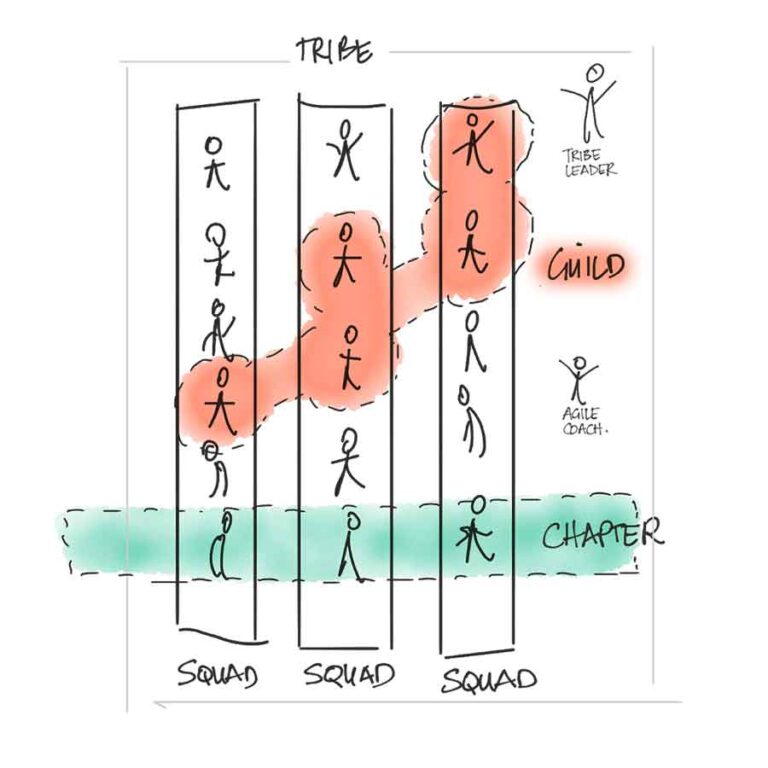 Back to Resources
Back to Resources
Agile Workplaces – setting up a Guild
For even more tips, check out our upcoming certified training courses.
How do I set up a Guild?
One of the most common questions we are asked is how to set up Guilds. We will unpack some key aspects to consider in planning your Guild, as well as share a few troubleshooting tips for when you get going!
What is a Guild?
A Guild is a collection of people (from across business areas, and often different roles) with a shared interest. Regardless of their day-to-day role, they have a desire to extend their capability in that area through the development of a community of practice.

It’s usually self-organising (e.g. not a formal part of the structure). What unites the members of a Guild, is a shared passion for a specific subject and an interest in sharing knowledge, making joint decisions, solving broader problems together, improving a practice, and influencing the culture.
The purpose of the Guild is to share knowledge from across the organisation, build a continuous improvement culture that crosses all other structural boundaries, and to benefit from the lessons being learnt across the organisation.
Guilds bring value to individuals, teams, projects, and the organisation as a whole. Guilds are often actively encouraged by Leadership, and some may have senior leadership sponsorship in the business.
An example of a Guild in a tech company might be ‘DevOps Guild’ or ‘AWS Guild’. Within a bank, a Guild may be ‘Regulatory & Compliance Guild’, This could be made up of members from across the bank that are working together to improve employee’s understanding of and sharing experience with regards to how to overcome R&C challenges, and optimising the way they prepare and engage for R&C audit.
Setting up your Guild
• Craft your messaging upfront
• What is the purpose (the why) of these sessions
• What outcomes are we looking for
• Create a great WIIFM statement (can always grab a couple of potential members to help with this). This will help with comms, and the introduction at your launch event. Validate the statement at the event with the group
• Designing your event – some key components to consider are;
• POWER Start (e.g. purpose, outcomes, WIIFM, engagement, roles and responsibilities)
• An icebreaker that helps the community to get to know each other and recognise things in common
• ‘Team Charter’ – co-create a social contract, select a cadence, and where and how to share/store documents and communications. Consider creating a purpose/mission statement for the Guild
• Form a backlog – this could be a mix of seeded items like things that you think are important fundamentals, items from the survey, and some cool topics. Have a clear place to collect this backlog (low admin), and an easy way for people to add to the backlog and prioritise going forward. Make it easily accessible and visible.
• Drawcard – what is going to draw people to the event – a key speaker, an important person from the business opening, food? What else?
• Consider the leadership of this forum. Is there a key role leading it permanently, or for a term, or rotating? Does the leader have capacity, is there anything they need to support them, is there a clear set of responsibilities for them?
Running the events





